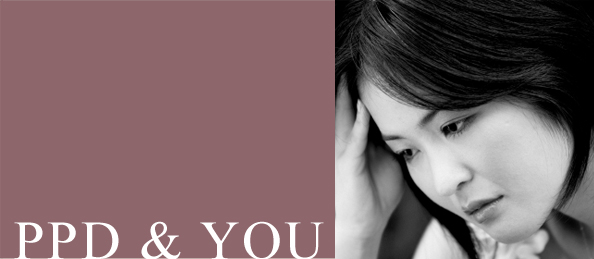 |
|
|
DefinitionsWhat means what? Hopefully these definitions will make it easier for you to understand this site and other resources you might seek as well. Baby Blues, also called Postpartum Blues or Postnatal Blues, affects between 50-80% of women immediately following childbirth, is thought of as a temporary state of heightened emotionality. This period of intensified emotions, characterized by increased irritability and crying spells, corresponds to the onset of lactation and at its longest lasts several weeks.2 Postpartum Depression (PPD), also referred to as Major Depressive Episode with Postpartum Onset and Postnatal Depression, is considered a depression that occurs within 4 weeks after the birth of your baby. There is a lot of debate about this 4 week marker though as research has been showing that onset can occur up to 6 months following birth2. Postpartum Psychotic Depression, which is what we often hear about in the news, affects 1 to 2 women out of every 1,000 who bear children3. This disorder presents as hallucinations, delusions, disorientation and profound depression. Although occurring within three weeks of childbirth, it is generally thought to be associated with a preexisting mood disorder such as bipolar disorder or major depression2. Primiparous refers to a woman who is in her first pregnancy. Multiparous refers to a woman who has had multiple pregnancies. Do Japanese Women Get PPD?Is PPD a western disorder or it is a more universal disorder that is not diagnosed or recognized in Japan? Researchers lean towards PPD being a universal disorder. In coming to this decision, cultural factors and relationships between family members were considered. Women’s role concept, relationship between parents and children and postpartum rituals were singled out as major differences between Japanese and American cultures. Rates of postpartum depression, other factors such as breast or bottle feeding processes, stressful life events, amount and quality of social support and women’s role concept regarding work and sacrifice were investigated as possible causes of PPD. The result was that each factor was found to be either not significantly related to depression or found to have similar occurrences in both Japanese and American populations6. It has been a long standing idea that PPD did not exist in Japan, however, research seems to show that there are no significant differences in the rates of PPD. The only factor that predicted PPD in Japanese women was a strong and rigid idea of how mothers should behave and what they need to accomplish. These maternal role concepts, as they are called, stand as important considerations for PPD’s origin in Japanese versus US cultures. The Cultural DividePPD may be trickier to identify in non-western women because they may experience symptoms differently than western women do. A recent study found the prevalence rate of PPD in Japanese mothers to be around 14%, which is very similar to rates found in US mothers. Some cultures express problems as physical complaints rather than as disturbed psychological processes. Women may say that their bodies hurt rather than tell their doctors that they are feeling sad. There is an understanding among Asian cultures that physical distress is a more acceptable outlet for depression than emotional symptoms7. A health care provider who is not aware of this cultural belief could easily overlook symptoms of PPD. This is why it is important for women of different cultures to understand PPD and how their specific cultural values impact it.
|
|




